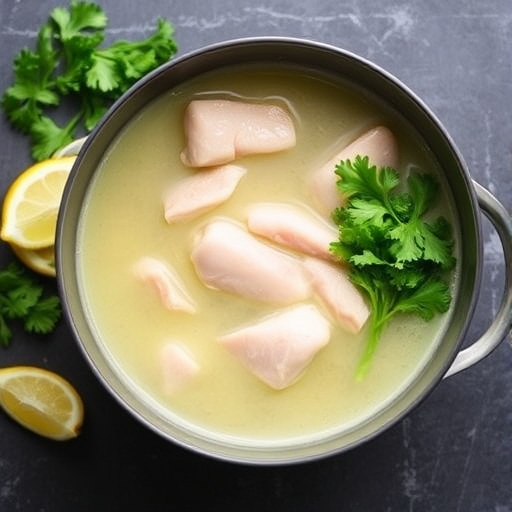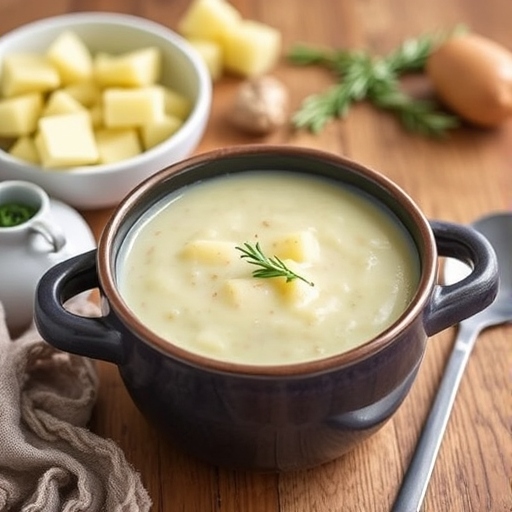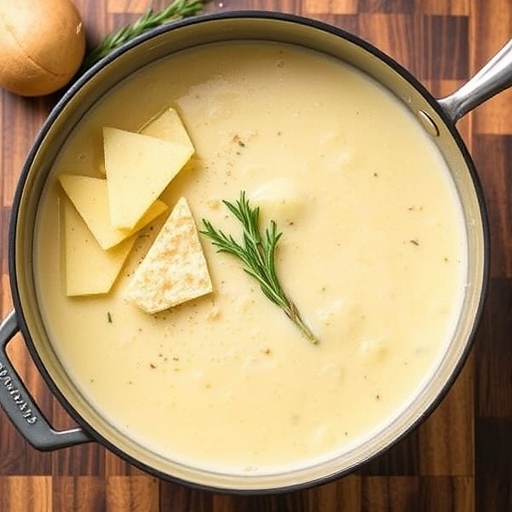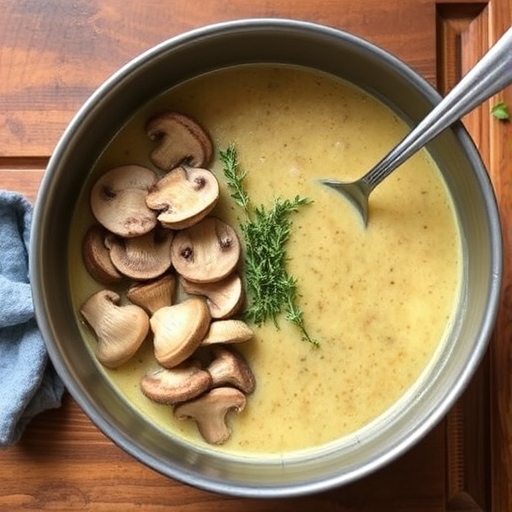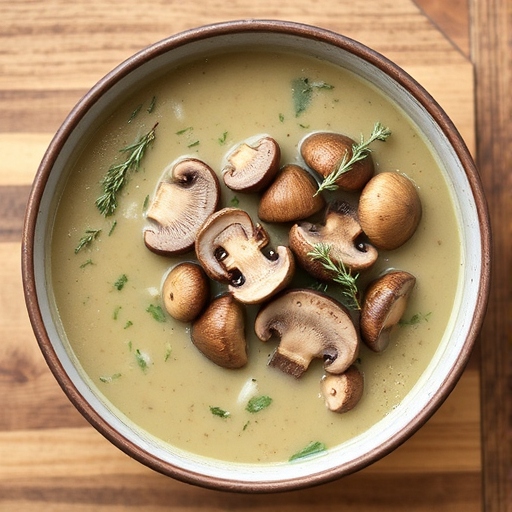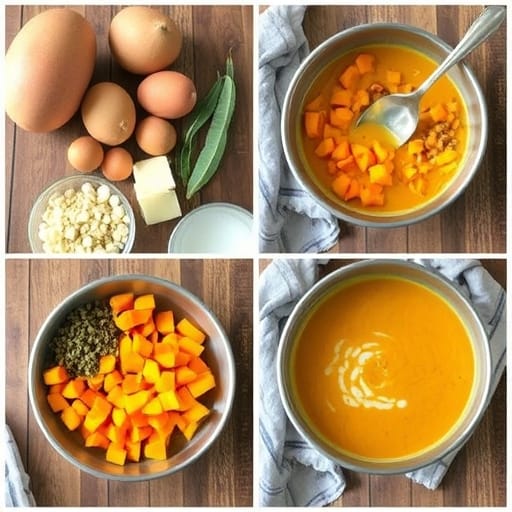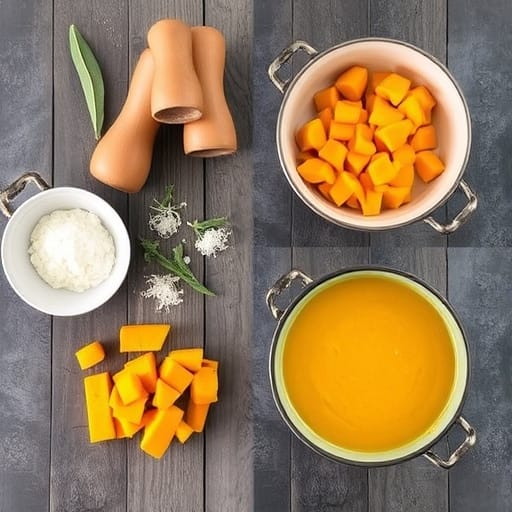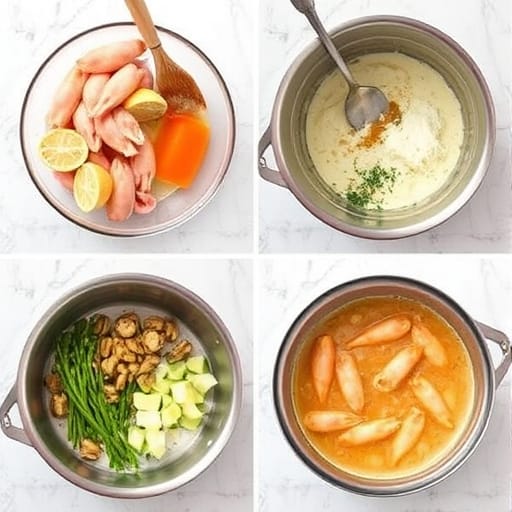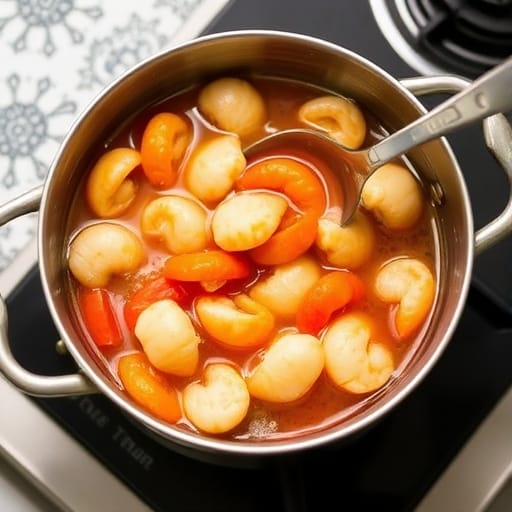Introduction
Warm, comforting, and delightfully simple, Tomato and Oregano Soup is the perfect dish for any season. Its rich tomato base, infused with the aromatic essence of oregano, offers a symphony of flavors that soothe the soul. Whether paired with crusty bread or enjoyed on its own, this timeless soup promises nourishment and satisfaction with every spoonful.
Table of Contents
1. The Story Behind Tomato and Oregano Soup
Tomato soup has long been a staple of comfort food, with its origins dating back to the late 18th century. Adding oregano, a fragrant herb native to the Mediterranean, transforms the soup into a celebration of rustic Italian flavors. This combination reflects the harmony of simple ingredients, showcasing how herbs can elevate even the most basic dishes. This recipe draws inspiration from traditional Mediterranean kitchens, bringing a touch of their warmth and tradition into your home.
2. The Benefits of Making Your Own Tomato and Oregano Soup
- Control Over Ingredients: Homemade soup ensures no hidden additives or preservatives.
- Freshness: Using ripe, fresh tomatoes and oregano enhances both flavor and nutritional value.
- Customizable: Adjust the consistency, seasoning, or garnish to suit your taste.
- Budget-Friendly: A cost-effective option for a nourishing meal.
- Healthier Option: Packed with vitamins, antioxidants, and the goodness of fresh produce.
3. Essential Ingredients for the Perfect Tomato and Oregano Soup
Here’s what you’ll need:
- Fresh Tomatoes: 6 large ripe tomatoes (or 4 cups of canned tomatoes).
- Oregano: 1 tablespoon dried or 2 tablespoons fresh oregano, chopped.
- Olive Oil: 2 tablespoons, extra virgin for rich flavor.
- Onion: 1 medium, finely chopped.
- Garlic: 2 cloves, minced.
- Vegetable Broth: 3 cups, low-sodium preferred.
- Salt and Pepper: To taste.
- Heavy Cream (Optional): ¼ cup for added richness.
- Basil or Parsley (Optional): For garnish.
4. Cultural History of Ingredients
- Tomatoes: Initially cultivated in South America, tomatoes became a global culinary staple after their introduction to Europe in the 16th century. They’re now central to countless cuisines.
- Oregano: Known as “the joy of the mountain,” oregano is a quintessential Mediterranean herb that symbolizes health and vitality.
- Olive Oil: A cornerstone of Mediterranean diets, olive oil has been treasured for its flavor and health benefits for millennia.
5. Equipment You’ll Need
- Large pot for cooking.
- Blender or immersion blender for pureeing the soup.
- Fine mesh strainer (optional) for a smoother consistency.
- Ladle for serving.
- Knife and cutting board for prepping ingredients.
6. Step-by-Step Instructions for Tomato and Oregano Soup
- Prepare the Tomatoes
- If using fresh tomatoes, blanch them in boiling water for 1–2 minutes. Remove the skins, then chop.
- Sauté the Base
- Heat olive oil in a large pot over medium heat. Add onion and garlic, cooking until fragrant and translucent.
- Add Tomatoes and Oregano
- Stir in the chopped tomatoes and oregano. Cook for 5–7 minutes, allowing the flavors to meld.
- Simmer with Broth
- Pour in the vegetable broth. Bring to a boil, then reduce heat and simmer for 20 minutes.
- Blend the Soup
- Use an immersion blender to puree the soup until smooth. For a silkier texture, strain through a fine mesh strainer.
- Season and Finish
- Stir in salt, pepper, and cream (if using). Adjust seasoning as needed.
- Serve
- Ladle into bowls and garnish with fresh basil, parsley, or a drizzle of olive oil.
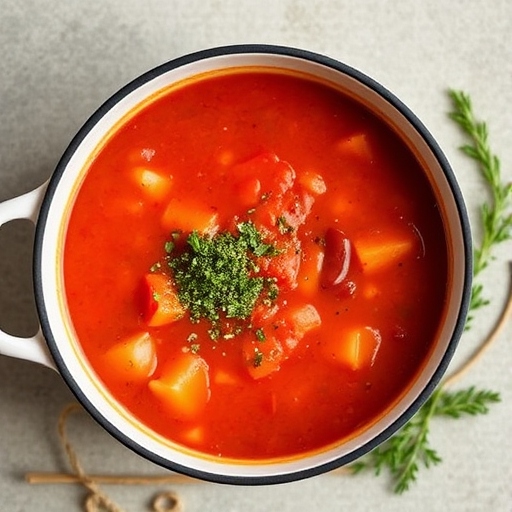
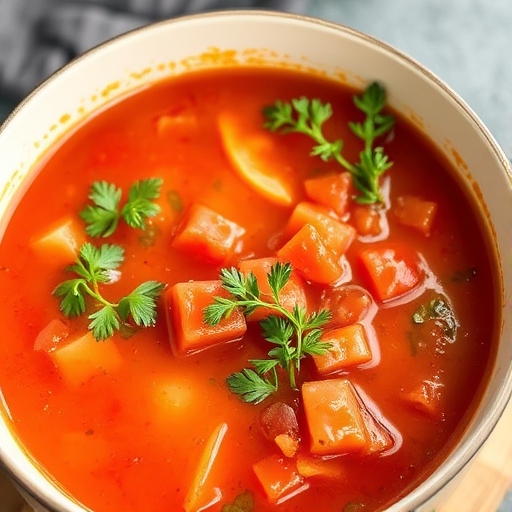
7. Suggestions for Serving and Storing
- Serving: Pair with toasted baguette slices, a side salad, or a dollop of sour cream.
- Storing: Store in an airtight container in the fridge for up to 4 days. Freeze for up to 3 months. Thaw and reheat gently on the stove.
8. Chef Simon’s Tips for Tomato and Oregano Soup
- Use Fresh Herbs: Fresh oregano provides a more robust flavor than dried.
- Roast Tomatoes: Roasting tomatoes before adding them to the soup enhances their natural sweetness.
- Add Depth: A splash of balsamic vinegar or red pepper flakes can elevate the flavor profile.
9. Emotional and Psychological Impact of Food
Tomato and Oregano Soup is more than sustenance—it’s comfort in a bowl. Its warmth and simplicity bring a sense of nostalgia, evoking memories of family dinners and cozy evenings. Enjoying this soup can reduce stress and foster a sense of well-being.
10. Mindful Cooking Techniques
- Pay attention to the aromas of sautéing onions and garlic, which create the soup’s base.
- Stir slowly and taste frequently, immersing yourself in the process.
- Appreciate the vibrant colors and fresh ingredients, connecting with the dish on a sensory level.
11. Tips for Keeping the Recipe Fresh Longer
- Store the soup in small portions to avoid repeated reheating.
- Freeze in silicone molds for individual servings.
12. Advanced Culinary Terms and Techniques
- Blanching: Quickly boiling and cooling tomatoes to remove their skins.
- Deglazing: Adding broth to lift browned bits from the pot, enhancing flavor.
13. Healthy Ingredient Alternatives
- Replace heavy cream with coconut milk for a dairy-free option.
- Use low-sodium broth for a heart-healthier choice.
- Add lentils or chickpeas for extra protein.
14. More Serving Ideas
- Sprinkle with grated Parmesan for added richness.
- Serve with a grilled cheese sandwich for a classic combination.
15. Common Issues and Solutions
- Too Watery: Simmer uncovered to reduce and thicken the soup.
- Overly Tangy: Add a pinch of sugar to balance acidity.
16. Variations to Try
- Spicy Tomato Soup: Add red chili flakes or cayenne pepper.
- Creamy Tomato Soup: Blend in cream cheese or cashews for extra creaminess.
17. Nutritional Information and Health Benefits
- Calories: ~180 per serving (without cream).
- Rich in Antioxidants: Tomatoes contain lycopene, promoting heart health.
- Low in Fat: A healthy, guilt-free option for any diet.
18. The Art of Pairing Tomato and Oregano Soup
Pair with crusty bread, garlic knots, or a light salad with vinaigrette. A crisp Sauvignon Blanc or herbal tea complements the soup’s flavors beautifully.
19. Weather and Recipe Outcome
Tomato and Oregano Soup is ideal for chilly weather, offering warmth and comfort. However, its lightness also makes it suitable for summer evenings.
20. Other Soup Recipes to Explore
- Roasted Red Pepper Soup
- Carrot and Ginger Soup
- Creamy Mushroom Soup
21. Focus on Tools and Equipment
- Invest in a high-quality immersion blender for smooth purees.
- Use heavy-bottomed pots to prevent burning.
22. Frequently Asked Questions (with answers)
Q: Can I make this soup vegan?
A: Yes, simply omit the cream and use vegetable broth.
Q: How do I thicken the soup without cream?
A: Blend in cooked potatoes or add a spoonful of tomato paste.
Conclusion
Tomato and Oregano Soup is a celebration of simplicity and flavor, a dish that embodies comfort and nourishment. Its rich, aromatic blend of ripe tomatoes and fragrant oregano makes it a favorite for all occasions. By following this recipe, you can bring the warmth of Mediterranean tradition into your kitchen and create a meal that satisfies both the palate and the soul. Enjoy every spoonful!



